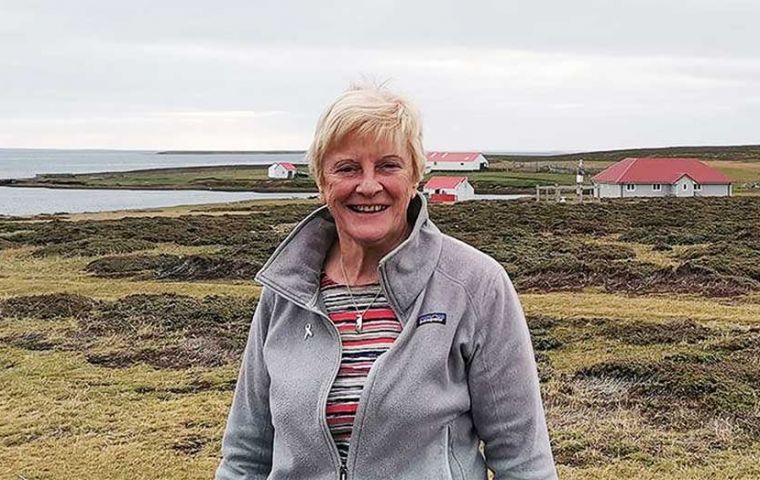MercoPress. South Atlantic News Agency
Falklands, controversy with Navitas oil company Environmental Impact Statement
 Phyl Rendell Chair FI Offshore Hydrocarbons Environmental Forum
Phyl Rendell Chair FI Offshore Hydrocarbons Environmental Forum Falklands Conservation has published initial views on the Navitas oil company Environmental Impact Statement (EIS) and encourages people to comment on the report. This is of course welcome but their statement that essential information on key animal groups is missing, is misleading. It states that ‘the presented seabird data is more than 20 years old’.
This is not true; the data presented extends beyond the Seabirds at Sea Team (SAST) dataset. A large amount of tracking data collected through the GAP program between 2014 and 2019 has also been incorporated into the Impact
Assessment (EIA). The GAP initiative was jointly funded by FIG and oil company licensees and administered through the Falkland Islands Offshore Hydrocarbons Environmental Forum (FIOHEF). The GAP project was initiated by a sub-group of the OHEF with membership from FIG, the Petroleum Licensees and local environmental organizations.
The Forum recognized that the SAST data was an ageing and incomplete dataset and this was one of the priority actions identified for the GAP program.
Initially GAP I concentrated on filling gaps in understanding the distribution of the more vulnerable seabirds (i.e., swimming seabirds – penguins) and modeled their at sea utilization from colonies on the northern parts of the Falkland Islands. These data, as well as broader more recent datasets have been incorporated into the current impact assessment and are referenced in the Environmental Impact Statement.
Falkland Conservation’s piece on impacts on wildlife fails to mention broader data included and it does not recognize or mention the extensive human and financial resource put into the GAP program to improve upon seabird distribution knowledge around the Falklands’ offshore. The GAP projects and the consolidation of seabird tracking data from numerous collaborators, all of which have played some part in the EIA, presents the largest data set of its sort in the South Atlantic. Therefore, the SAST data should be considered complementary to the more recent data utilized in the EIS.
It is important to note that for the Sea Lion field area specifically, that the Environmental Monitoring and Management Plan will employ seabird and marine mammal observers for a period of three years pre first oil and the data collected will augment existing datasets.
Falklands Conservation has been represented at the Forum since it was established and throughout the Gap 1 and Gap 11 projects. The excellent Gap11 report was endorsed by ExCo last year and I commend it to all with an interest in these matters to read it. (Penguin News)




Top Comments
Disclaimer & comment rulesCommenting for this story is now closed.
If you have a Facebook account, become a fan and comment on our Facebook Page!